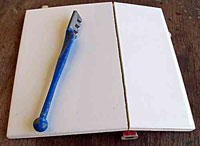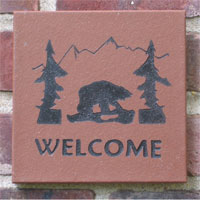Solid State Forming (SSF) is another method in ceramic industry to make products with specific forms. It is divided into two types:
• Forming before firing
• Forming after firing
Forming before Firing:
Here, we dry the paste of ceramic to a solid. Then, we form it with normal tools like saw, drill, sand paper or simple process of turning etc.

Forming after Firing:
The paste of ceramic is dried to a solid and fired. After that, we start forming with special tools like diamond blade, cutter (picture given below) or with laser, acid etc.

(Image source)
Laser Engraving Ceramic:
Engraving a ceramic product can completely change its appearance. Different types of techniques are used depending upon the type of the ceramic. Basically, some material is removed from the ceramic by laser and an ‘engraved’ mark is achieved. In some cases not only the top surface is affected, but also the underlying material. This is more common in commercial grade ceramic items such as earthenware.
Industrial ceramics are typically much more heat resistant and have a better quality front surface. Because of the surface condition, engraving is usually of the highest quality.
A special laser application on ceramic is the processing of special tiles (laser tiles) which can be directly inscribed with a CO2 laser engraver and produce a rich and dark contrast.
The best time to engrave a ceramic product is before glazing. The rough ceramic is easy to engrave and subsequent glazing can protect the fresh engraving. The overall completion time for a product varies with the complexity of design.

(Image source)

